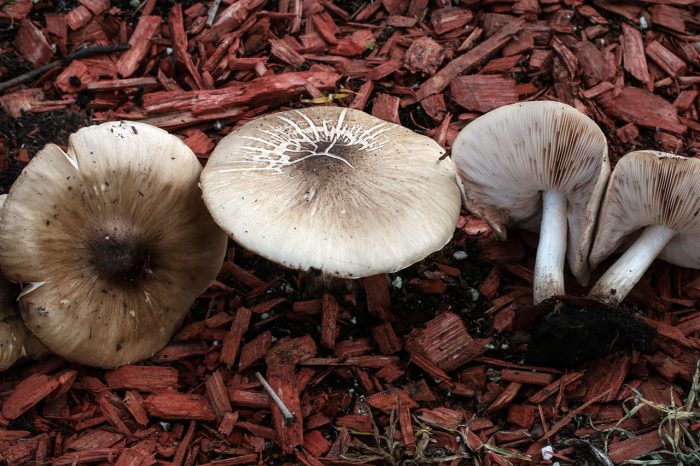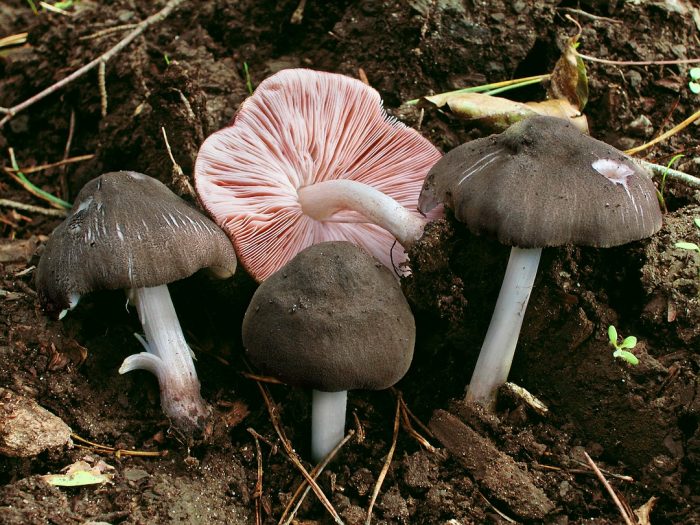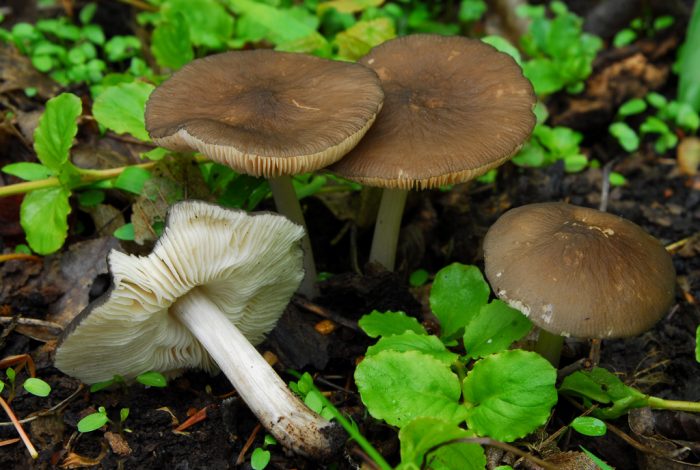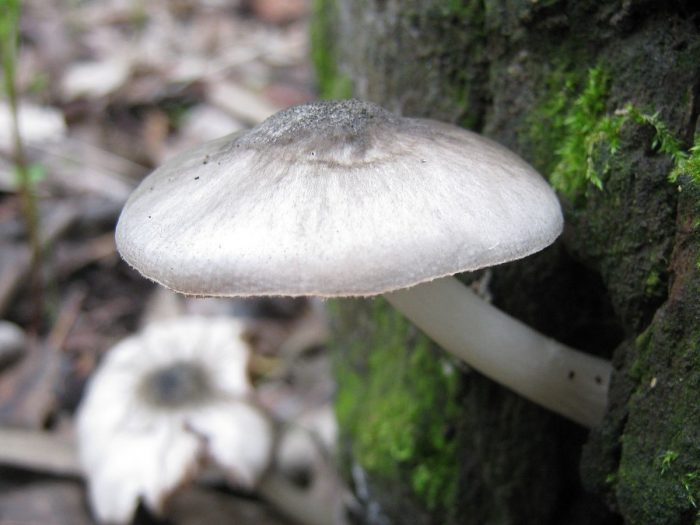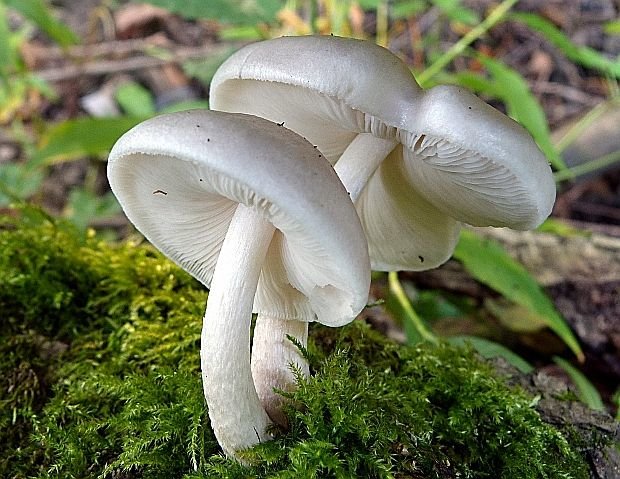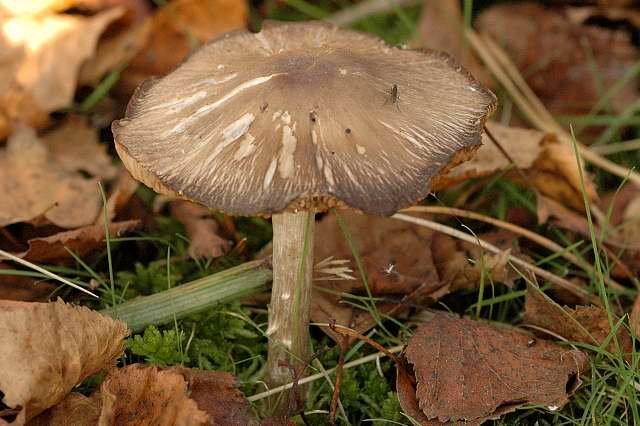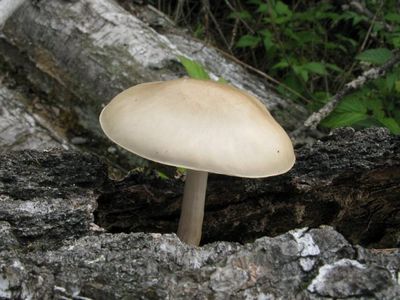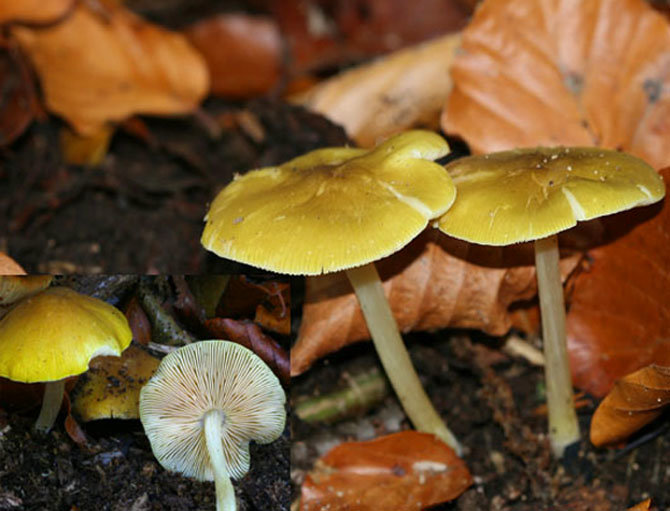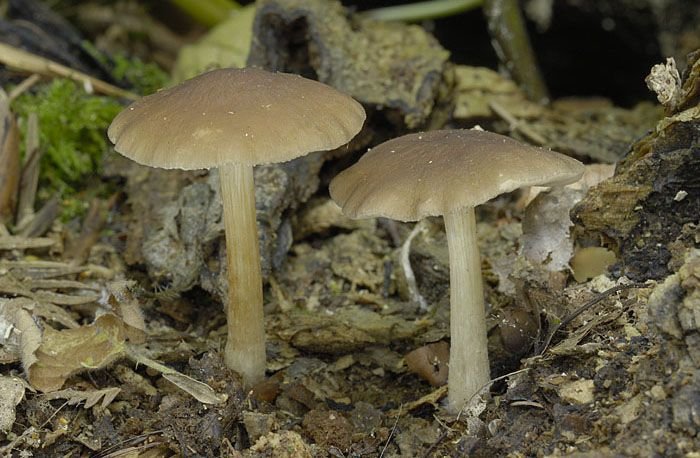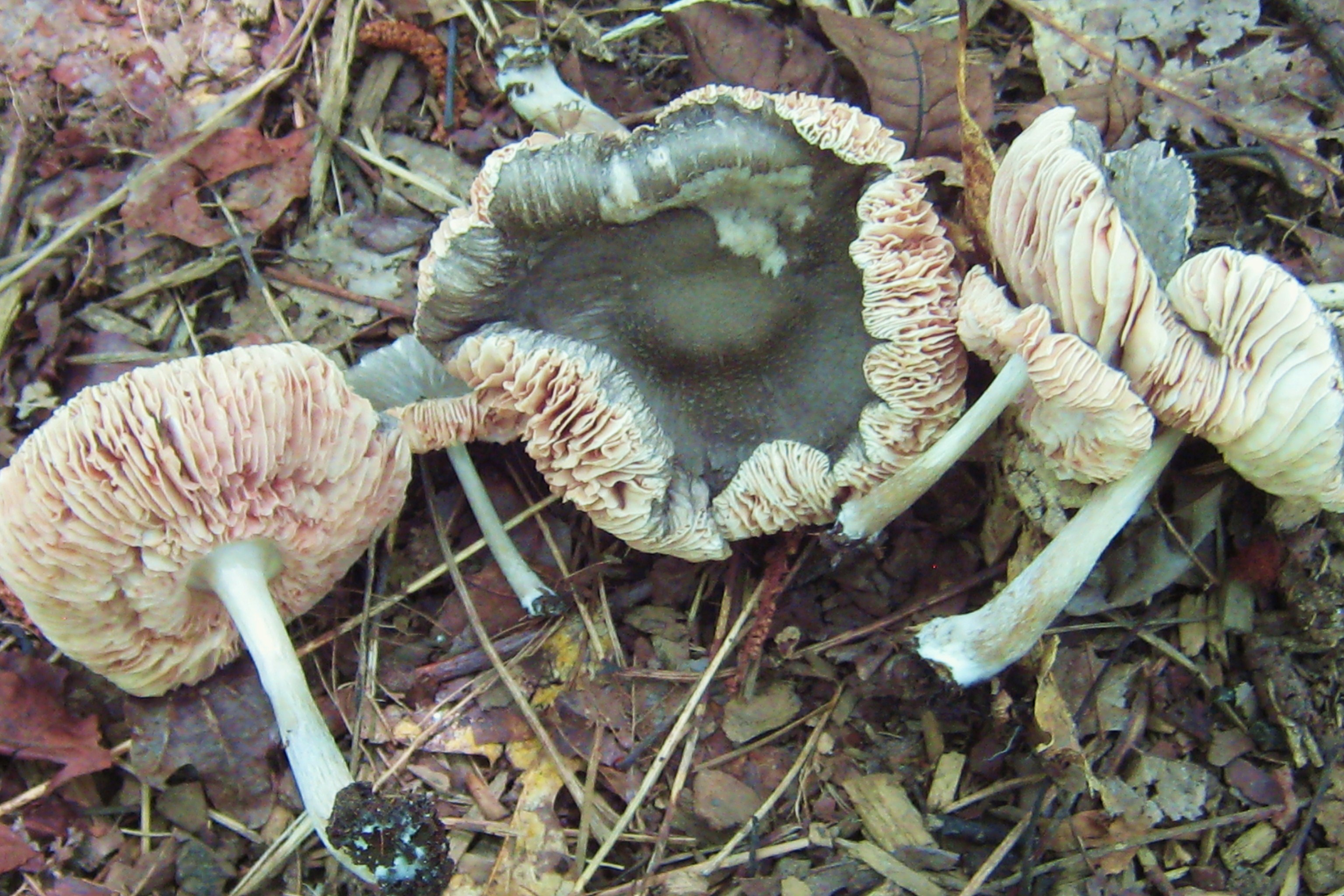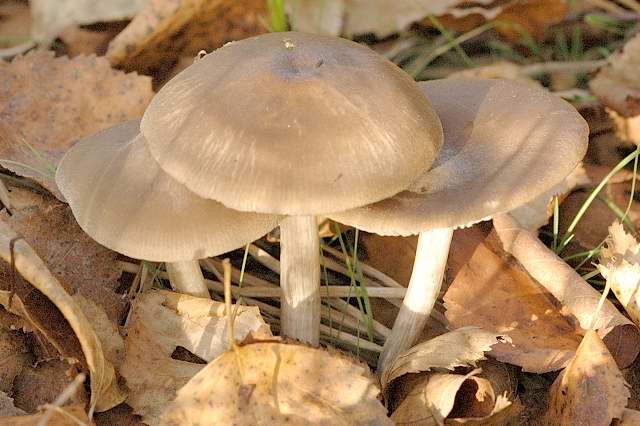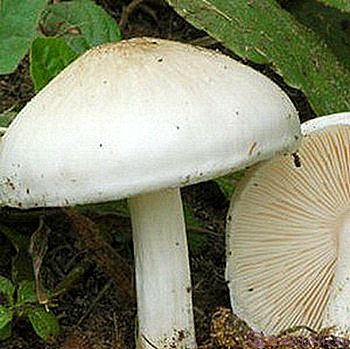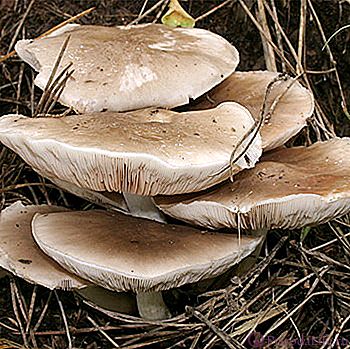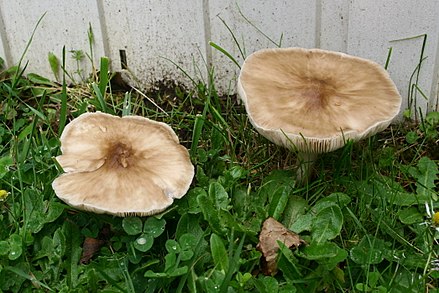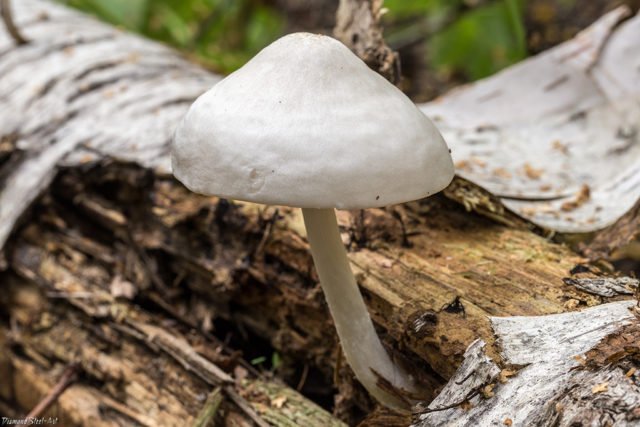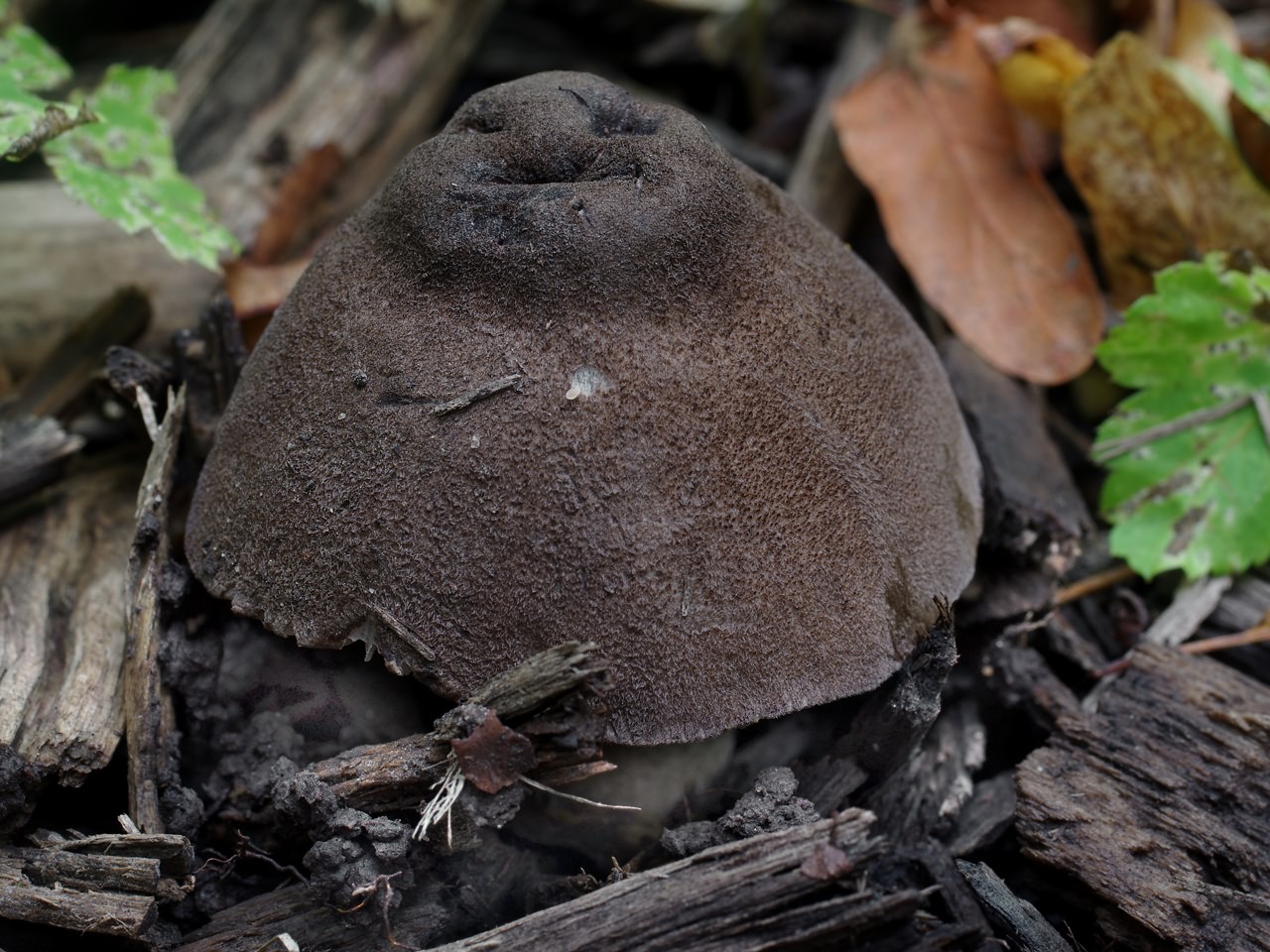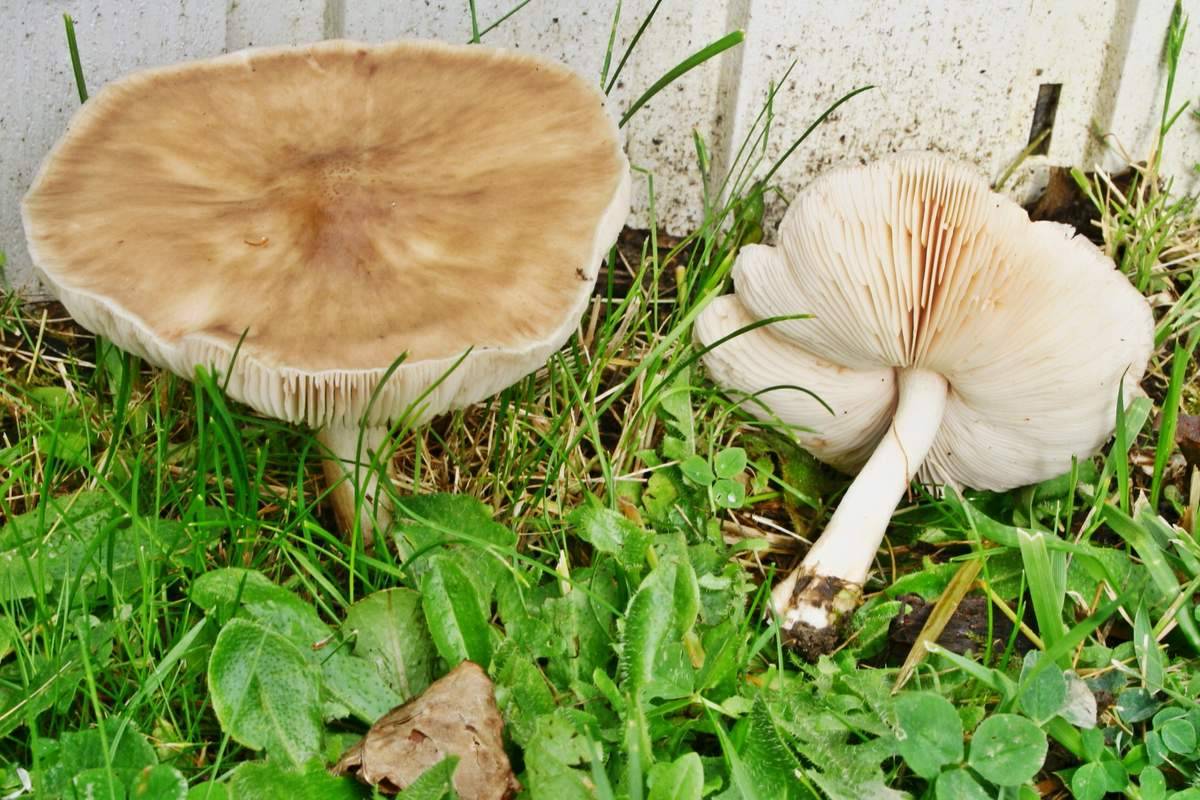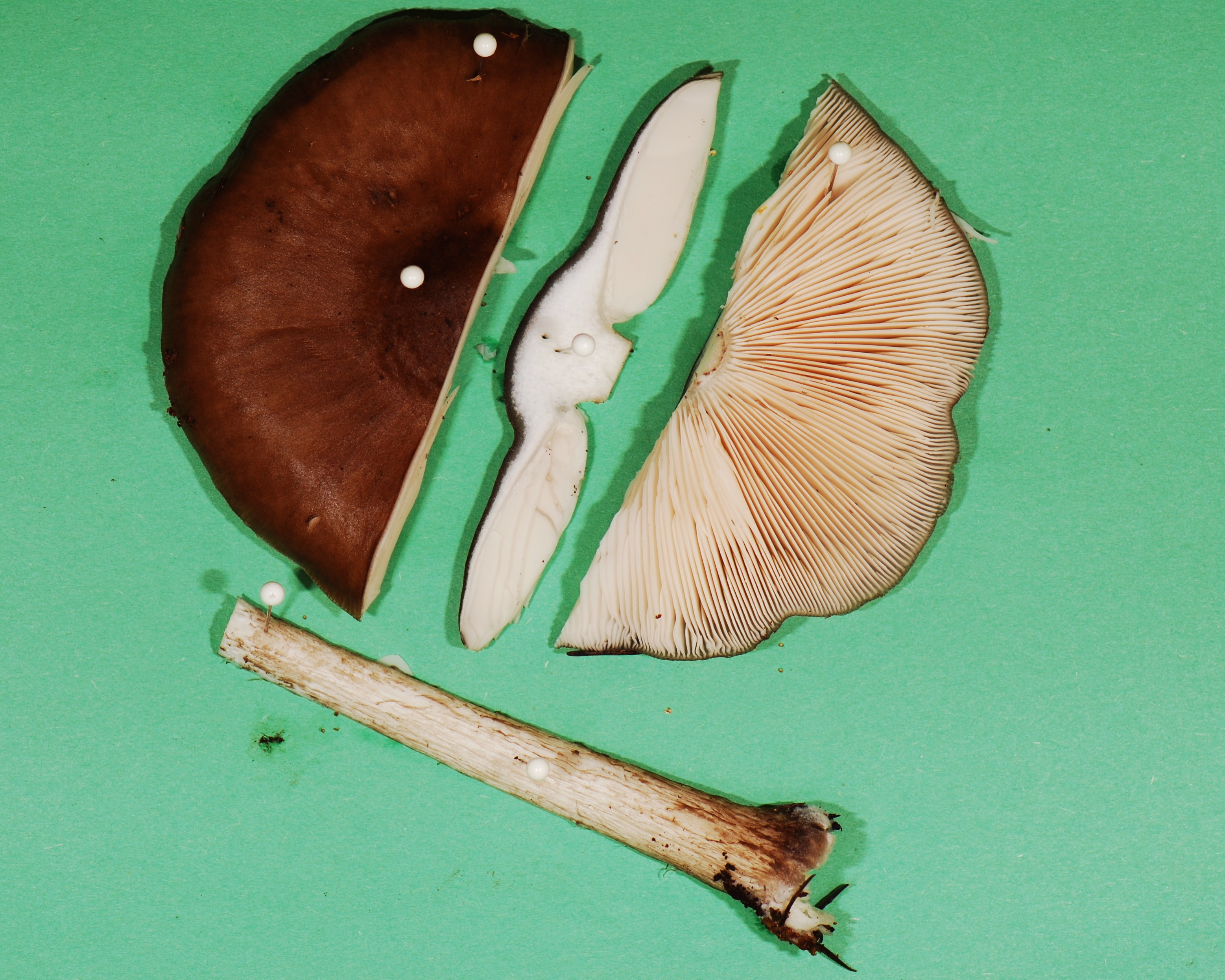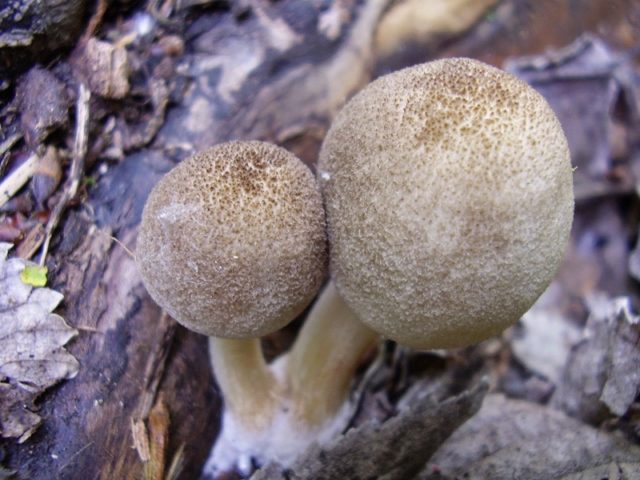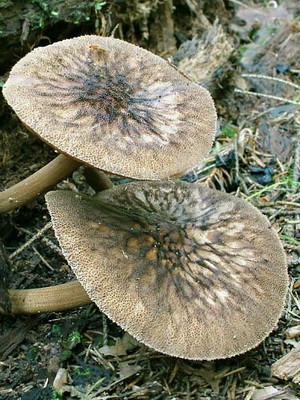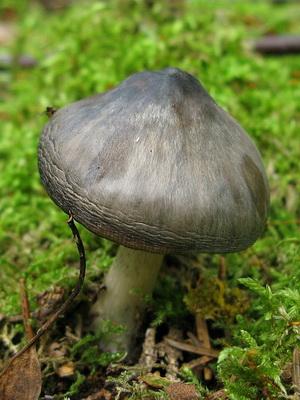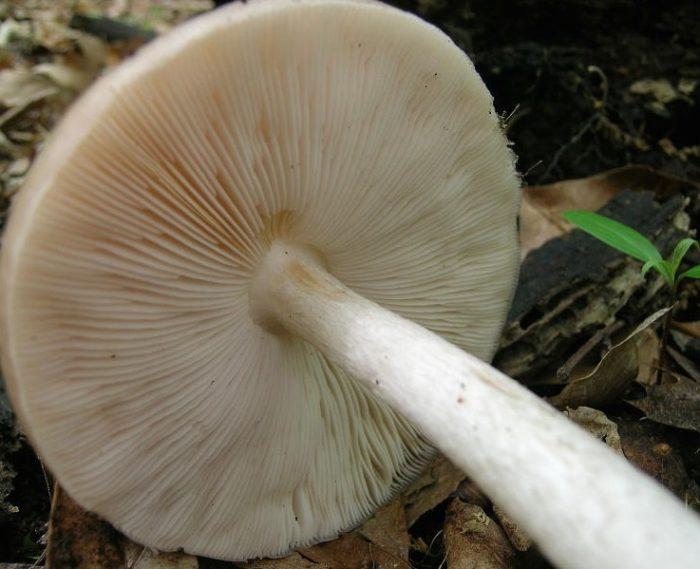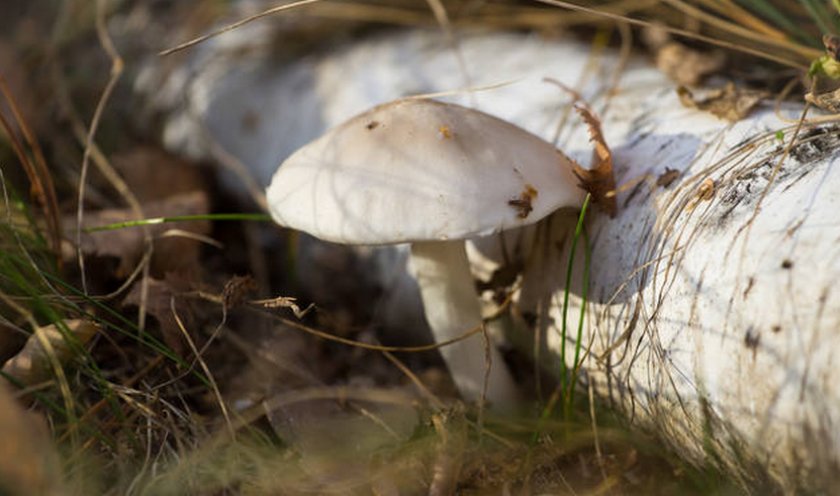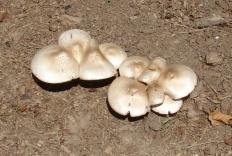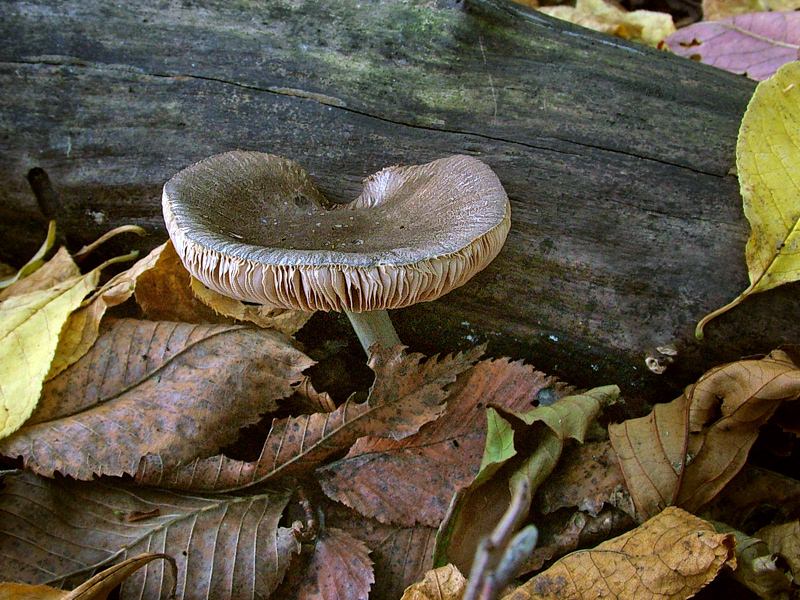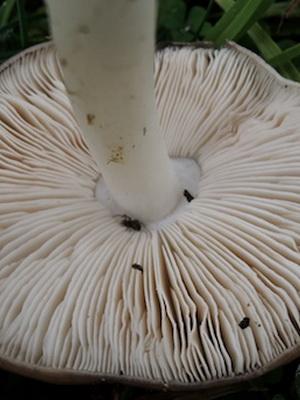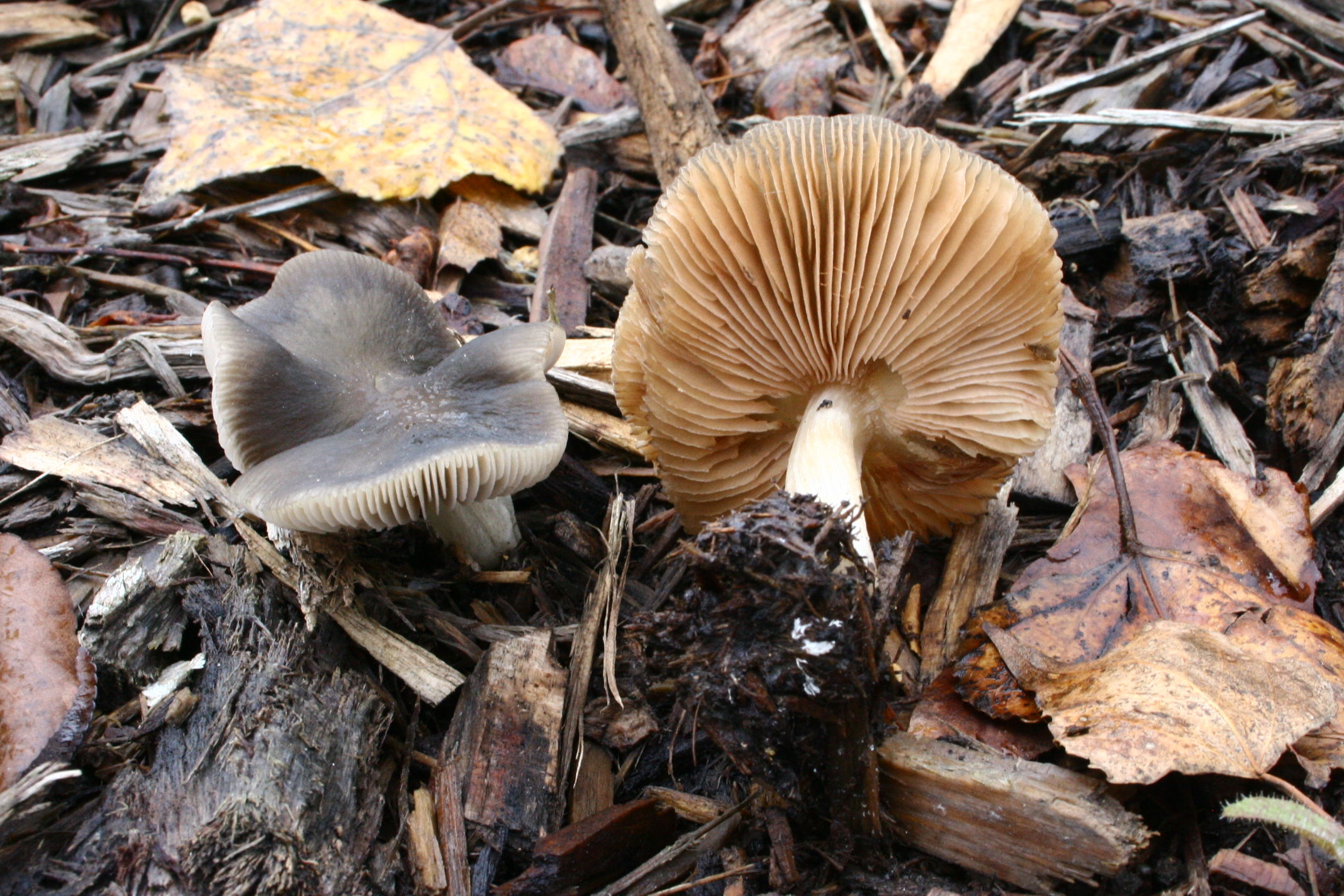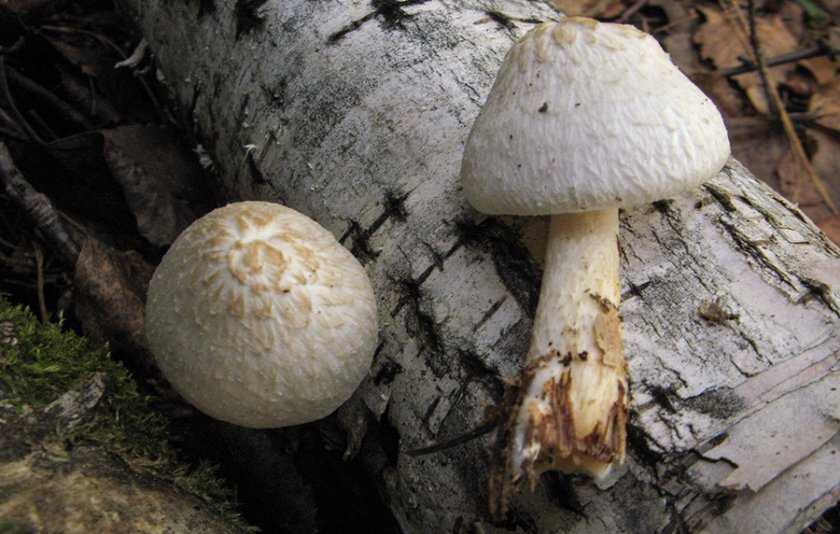Taxonomy
- Synonyms
- Agaricus villosus Bull., 1785 (nom. Illeg.) Basionym
- Agaricus nigrovillosus J.F. Gmel., 1792
- Agaricus ephebeus Fr., 1818 (nom.nov. For Agaricus villosus Bull.)
- Pluteus villosus Quél., 1888 (nom. illeg.)
- Pluteus murinus Bres., 1905
- Pluteus lepiotoides A. Pearson, 1952 - Scale-like roach, or lepiotic
- Pluteus pearsonii P.D. Orton, 1960
- Pluteus drepanophyllus Singer, 1986
- Pluteus plautus sensu Pearson, (1952) - homonym for Pluteus plautus (Weinm.) Gill., 1876
The scope of the species is not clearly understood. M. Moser (1983) and P. Orton (1986) describe Pluteus villosus, Pluteus murinus and Pluteus pearsonii as different species; E. Wellinga in 1990 indicated detailed information about Pluteus ephebeus sensu lato, the synonymy of which includes Pluteus lepiotoides - Scaly-like plute. SP Vasser, on the basis of the studied herbarium material, considers Pluteus lepiotoides to be an independent species; the rest of the names includes Pluteus ephebeus in synonymy.
Definitioner
- Basidia (Basidia)
-
Lat. Basidia. A specialized structure of sexual reproduction in fungi, inherent only in Basidiomycetes. Basidia are terminal (end) elements of hyphae of various shapes and sizes, on which spores develop exogenously (outside).
Basidia are diverse in structure and method of attachment to hyphae.
According to the position relative to the axis of the hypha, to which they are attached, three types of basidia are distinguished:
Apical basidia are formed from the terminal cell of the hypha and are located parallel to its axis.
Pleurobasidia are formed from lateral processes and are located perpendicular to the axis of the hypha, which continues to grow and can form new processes with basidia.
Subasidia are formed from a lateral process, turned perpendicular to the axis of the hypha, which, after the formation of one basidium, stops its growth.
Based on morphology:
Holobasidia - unicellular basidia, not divided by septa (see Fig. A, D.).
Phragmobasidia are divided by transverse or vertical septa, usually into four cells (see Fig. B, C).
By type of development:
Heterobasidia consists of two parts - hypobasidia and epibasidia developing from it, with or without partitions (see Fig. C, B) (see Fig. D).
Homobasidia is not divided into hypo- and epibasidia and in all cases is considered holobasidia (Fig. A).
Basidia is the place of karyogamy, meiosis and the formation of basidiospores. Homobasidia, as a rule, is not functionally divided, and meiosis follows karyogamy in it. However, basidia can be divided into probasidia - the site of karyogamy and metabasidia - the site of meiosis. Probasidium is often a dormant spore, for example in rust fungi. In such cases, probazidia grows with metabasidia, in which meiosis occurs and on which basidiospores are formed (see Fig. E).
See Karyogamy, Meiosis, Gifa.
- Pileipellis
-
Lat. Pileipellis, skin - differentiated surface layer of the cap of agaricoid basidiomycetes. The structure of the skin in most cases differs from the inner flesh of the cap and may have a different structure. The structural features of pileipellis are often used as diagnostic features in descriptions of fungi species.
According to their structure, they are divided into four main types: cutis, trichoderma, hymeniderma and epithelium.
See Agaricoid fungi, Basidiomycete, Cutis, Trichoderma, Gimeniderm, Epithelium.
- Pileipellis (Pileipellis)
-
Lat. Pileipellis, skin - differentiated surface layer of the cap of agaricoid basidiomycetes. The structure of the skin in most cases differs from the inner flesh of the cap and may have a different structure. The structural features of pileipellis are often used as diagnostic features in descriptions of fungi species.
According to their structure, they are divided into four main types: cutis, trichoderma, hymeniderma and epithelium.
See Agaricoid fungi, Basidiomycete, Cutis, Trichoderma, Gimeniderm, Epithelium.
- Trichoderma (Trichoderma)
-
The type of cap skin, usually consists of straight, septate elements located more or less perpendicular to the surface and laid both at the same and at different levels; the ends of the hyphae can be morphologically modified and represent dermatocystids. The surface of the cap is velvety to almost felt.
Lat. Trichoderm.
Trichoderma, in turn, is subdivided into intertwined trichoderma and irregular trichoderma.
Intertwined trichoderm (Intricate trichoderm) - trichoderm, consisting of intertwined hyphae, located not parallel to each other and forming a tomentose pubescence.
Irregular trichoderm - Trichoderma, consisting of irregularly branching hyphae.
See Dermatotsistida, Hypha, Septa.
- Cutis
-
The type of cap skin, consists of creeping non-gelatinized hyphae located parallel to the surface. The surface of the cap looks smooth.
Lat. Cutis.
See Gifa.
White clue: photo and description
See what the rogue looks like in the photo:
In the photo, White Plyutey
More recently, research by biologists has shown that some subspecies have a small dose of the glucinogenic component. Therefore, the use of such mushrooms for cooking is highly questionable.
There are several subspecies:
- deer;
- White;
- scaly;
- noble;
- willow.
The mushroom can be used for food. Another name is lashes of kuchkovaty. You can meet him in Europe, Japan, China, Primorye and Siberia. Some specimens have been found in the states of the northern part of the African continent.
Main external characteristics:
- The lower part is up to 12 cm long, its thickness is within 1-2 cm. It is filled with pulp with fibers, white. The leg is smooth and firm. Volvo and ring are undetectable.
- The upper part is up to 12 cm in diameter, fragile, finely fleshy. On a young mushroom, the cap resembles a half of a sphere, then it opens up, a low blunt tubercle forms. It is fibrous, silky, white, sometimes with scales closer to the center.
- The plates are high, loose, white or slightly pinkish. But this shade appears in old mushrooms. The young have white plates.
- The pulp is white, soft. On the cut, it does not change color, without a pronounced odor. Near the cap, its color becomes close to yellow.
The mushroom itself does not have a distinct smell or taste.
Grows in gardens, forest plantations and vegetable gardens. Appears from May to November. On wood residues, on the lawn in places where there was mulching with sawdust, it often grows in mulched beds.
There are no poisonous mushrooms similar to rods without a ring and without a Volvo. But some mushroom pickers talk about similarities with a subspecies from the same Pluteyev family - orange-powerful.
It requires boiling for 15 minutes, which makes the mushroom suitable for further use. White stick can be used in second courses and for pickling.
It is not used in medical practice.
Practical value
The genus contains edible species; mushroom pickers are best known for deer roaches (Pluteus cervinus(Pluteus umbrosus), dark-edge rogue (Pluteus atromarginatus). Inedible species include such species as velvety-footed sticks (Pluteus plautus), noble rogue (Pluteus plautus). Some common species in the special literature are characterized as "little-known edible mushrooms", but some authors classify them as inedible - dwarf cod (Pluteus nanus), venous crimson (Pluteus phlebophorus). In many species, nutritional or toxic properties have not been studied and are considered inedible.
For several species, the possibility of medicinal use is being studied. In experiments on mice, it was found that the extract of polysaccharides from deer spit suppresses the growth of malignant tumors, anti-cancer and immunostimulating effects were found in dwarf spit, lion-yellow (Pluteus leoninus), orange-wrinkled (Pluteus aurantiorugosus).
A small number of poisonous (hallucinogenic) representatives are known to contain psilocybin. In Central Africa, a mushroom little known to science with a pungent odor and bitter taste is used by the Banza and Eala peoples, the local names of the mushroom, respectively, abanda and Losulu... It has been described as a species of spit a deer called Pluteus cervinus var. ealaensis Beeli 1928, detailed information about it in the literature was absent for a long time. In 2010, a modern description was published and the species was named Pluteus losulu... In the 1980s and 1990s, psilocybin was found in willow spit (Pluteus salicinus), blue (Pluteus cyanopus), P. nigroviridis and P. glaucus.
Description
The hat is 4-9 centimeters in diameter, thick-fleshed, from semicircular to convex, later to widespread, with a pronounced tubercle. The surface is fibrous, grayish-brown, in the center it is covered with small adpressed scales, often radially cracked.
loose, wide, frequent, pinkish-gray, with age they become pink with a whitish edge.
The stem is 4-10 x 0.4-1 cm, cylindrical, central, dense, with a small tuber at the base. The surface is whitish or grayish, shiny, smooth, covered with fibrous grooves, more intense in the lower part.
The pulp is whitish, does not change on the cut, with an astringent taste, the smell is not pronounced.
The remains of the bedspreads are absent, the spore powder is pink.
Spores are smooth, from broadly ellipsoid to ellipsoid, less often ovoid, 6-8.5 × 5-6.5 (7) µm.
Botanical illustration by P. Buyyard (1791)
The hyphae of the cap peel, 10-15 µm wide, contain brown pigment; the hyphae of the integument of the pedicle are colorless, 5–15 µm in width; larger pigmented cells are found on the pedicle.
Basidia are four-spore, 20-40 × 6-10 µm in size, clavate, thin-walled.
Cheilocystids 25–80 × 7–35 µm in size, variable in shape - from clavate to saccular or vesicle-bottle-shaped, thin-walled, colorless, numerous. Pleurocystids are rare, 40–100 × 15–35 µm, also variable in shape, vesicular, fusiform or bottle-shaped, thin-walled, colorless, with or without an apicular appendage, without teeth.
Similar species
Authors hosting squamous scaly (Pluteus lepiotoides) consider it to be a separate species rather well limited and indicate the following differences: smaller size of fruiting bodies, well-pronounced scaly and other signs of a cap, lack of an astringent pulp taste, differences in the size of spores, basidia, cystids.
The hat is 4-5 cm in diameter, semi-circular or convex-outstretched in shape, with or without a tubercle, thick fleshy in the center, the flesh becomes thin fleshy to the edges. The surface is whitish, covered with dark brown, brown or blackish scales, smooth in the center and at the edge, in appearance similar to the surface of the cap in many species of the genus Lepiota (Lepiota). Leg 4-6 x 0.4-0.5 cm, whitish or gray, fibrous, furrowed. Spores 6-7 × 5-5.5 µm. Basidia 15–35 × 6–9 µm. Cheilocystids 30–70 × 10–30 µm, clavate or bottle-shaped. Pleurocystids 40–90 × 15–30 µm, sometimes absent. Ecologically, it is similar to scaly spit, very rare. Known in Europe: in the UK, the Netherlands, Germany, Ukraine and the Samara region of Russia.
Morphologically close to Pluteus lepiotoides indicate Robert's clues (Pluteus robertii).
Notes (edit)
- Malysheva V.F., Malysheva E.F. Higher basidiomycetes of forest and meadow ecosystems of the Zhiguli. - M.-SPb .: KMK, 2008. - 242 p. - ISBN 978-5-87317-562-8.
- ↑ Vasilyeva L.N. Agaric cap mushrooms (por. Agaricales) of Primorsky Territory. - L.: Nauka, 1973 .-- P. 165.
- ↑ R. Singer. The Agaricales in modern taxonomy. - Koenigstein: Koeltz Sci. Books, 1986.
- ↑ .
- ↑
- ↑, p. eight.
- ↑, p. 42.
- , with. 7.
- ↑ Belyakova G.A., Dyakov Yu.T., Tarasov K.L. Botany: in 4 volumes. - M.: Academy, 2006. - T. 1. Algae and mushrooms. - S. 293 .-- ISBN 5-7659-2731-5.
- , p. 15.
- , with. nine.
- , with. 40.
- Leontyev D.V., Akulov O. Yu. Zagalnaya mіkologіya: Pidruchnik for vishnyh navchalnye pawns. - Kharkiv: Osnova, 2007 .-- S. 208 .-- ISBN 978-966-495-040-1. (Ukrainian) (General mycology: Textbook for higher educational institutions).
- ↑, p. eleven.
- , with. 74.
- ↑, p. 44.
- , with. 59, 81.
- Serzhanina G.I. Hat mushrooms of Belarus. Determinant and synopsis of flora. - Mn.: Science and technology, 1984. - S. 290-291.
- , with. 5.
- , with. 4.
- ↑ Ott J. Pharmacotheon. Entheogenic drugs, their plant sources and history. - Kennewick, Wa, 1996. - P. 310. - ISBN 0-9614234-9-8.
- ↑, p. 9-10.
- , p. 1.
- ↑, p. 2.
- ↑, p. 42-44.
- , with. 46-48.
- , with. 45-46.
- , with. 53-55.
- , with. 52-53.
- , p. eighteen.
- , with. 65-67.
- , with. 67-69.
- , with. 62-63.
- , with. 84-85.
Reindeer ropes: photo and description
Category: inedible.
Reindeer spit hat (Pluteus cervinus) (diameter 4-25 cm): gray, brown or almost black. The edges are usually much lighter than the center, but if the weather is dry and sultry for a long time, it also fades a lot.In young mushrooms, the cap has the shape of a bell, which over time changes to almost completely outstretched with a small tubercle in the center. Silky to the touch, sometimes it can crack.
Leg (height 4-17 cm): usually white or gray, solid, cylindrical, with longitudinal fibers, often with a small reticular or moire pattern. May be severely curved and swollen. Easily detaches from the cap.
Flesh: very brittle, white in color, which does not change at the cut or when exposed to air.
Plates: wide and thick. Young reindeer spitters are white, with time the color changes to pinkish.
The reindeer plyutey got its name from the color of the hat. Has a pungent and tart radish odor.
Twins: the related spines of Posoir (Pluteus pouzarianus) and dark-edge (Pluteus atromarginatus), as well as wide-lamellar colibia (Megacollybia platyphylla). But Pozuar's creeper does not have a distinct smell and grows on soft deciduous trees, the dark-edged crimson is darker and most often found in coniferous forests, and the colibia is distinguished by a creamy shade of the plates.
When it grows: from the beginning of June to the end of August in almost all European countries.
Where to find it: On rotted wood of all types of forests, as well as sawdust. Prefers pine and birch.
Eating: not consumed.
Application in traditional medicine: not applicable.
Other names: brown plyutey, dark fibrous plyutey.
Ecology and distribution
See also: Ecological Groups of Fungi and Mycogeography
The overwhelming majority of species are lignophilic saprophytes; they settle on the remains of dead wood. They grow on stumps, dead wood, wood immersed in the soil or on soil rich in decayed wood near trees. Mycorrhiza formers among the representatives of the genus are unknown. Sometimes they are found on the trunks of still living rotten trees, they cause. They can be found mainly in forests, less often outside forests, in gardens, parks, they can grow in greenhouses. The substrate for many species is the wood of deciduous trees, which is in the late stages of decomposition; there are also known species specializing in coniferous wood, for example, Pouzar's cakes (Pluteus pouzarianus). The dynamics of wood decomposition by spits is poorly understood, because these fungi grow poorly on artificial nutrient media.
Representatives of the genus are found on all continents except Antarctica. The maximum species diversity in the temperate zone of the Northern Hemisphere is observed in the zone of deciduous forests, which is due to the nature of the substrate that these fungi prefer. Sufficiently well-studied species are often characterized by extensive ranges, among them there are cosmopolitans (deer roaches) and multi-regional representatives, that is, found on several continents - Eurasian-American, Eurasian- or European-African, etc. Species vary in frequency of occurrence from common to very rare, some species, generally marked as rare, may be more frequent in certain regions of their range (for example, tuberous plots). Some rare species with small fruiting bodies are not well taken into account when collecting, and their range may turn out to be much wider than indicated in the literature (rough creeper, blue creeper).
In South America, R. Singer in 1958 noted 66 species of pluettes, in Europe the greatest species diversity is described in Great Britain (43 species, P. Orton, 1986) and the Netherlands (29 species, E. Wellinga, 1990), the genus in The Baltic states (for Estonia, Latvia and Lithuania, 26 species are indicated - V. Urbonas et al., 1986) and in the Ukraine (27 species, S.P. Vasser, 1992), for Belarus, 9 species are indicated (G.I.Serzhanina, 1984 ). In Russia, the biodiversity and distribution of plutes was systematically studied only in certain regions, of which the Primorsky Territory (21 species, L.N. Vasil'eva, 1973), the Rostov region (21 species, A.A. 13 species, A.E. Kovalenko and O.V.Morozova, 1999) and Samara region (22 species, E.F. Malysheva, 2004)
Varieties
Among the most common edible species are:
- Reindeer rocking. It is eaten by deer. It also has a deer color - brown, for which it received such a popular name. It has a wide bell-shaped smooth cap with a slightly pronounced tubercle in the center, the pulp has a weak radish odor,
- Pluuteus umber. This is a conditionally edible mushroom with a characteristic bitterness and a rare odor that disappears during heat treatment. The plant has a flat-convex or open wrinkled cap of a whitish or brown color with a radial or mesh pattern, granular ribs and a serrated fringe.
- Dark-edge pluteus. It has a thick-fleshed bell-shaped or semicircular cap and torn edges, painted in dark shades of brown. Pulp with a sweet taste and pleasant aroma.
- The pluteus is lion-yellow. The mushroom has a brightly colored yellow bell-shaped or flat-convex cap with translucent striped edges.
There are several types of mushroom
Among the most famous inedible species are:
- Pluuteus velvety-footed. It has a thin velvety wrinkled brown cap, semicircular or flat, thin edges, often with distinct grooves.
- Noble rogue. It is characterized by a thick-fleshed shiny, sometimes slimy cap, which has smooth or tucked edges and is white and gray in color.
- The pluteus is dwarf. It has a thin, cone-shaped head with a distinct tubercle and a velvety brown-olive-colored surface. Covered with a soot-powdery bloom.
- The pluteus is venous. It has a thin conical or extended cap, a wrinkled mesh surface and smooth edges. Color - amber shades of brown.


